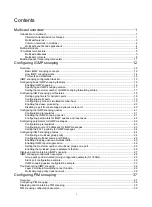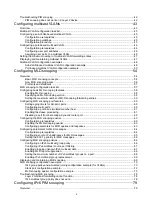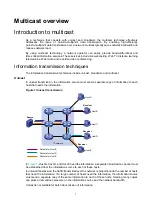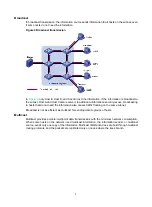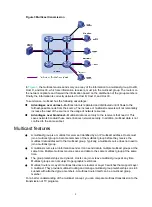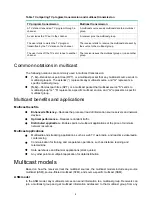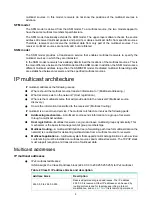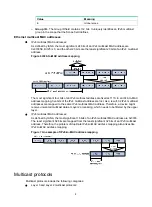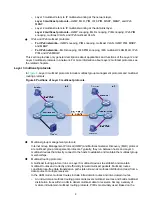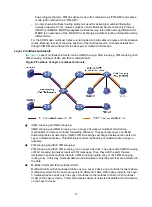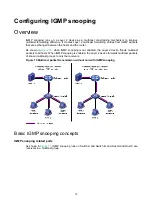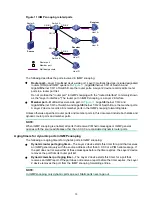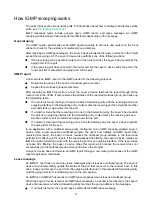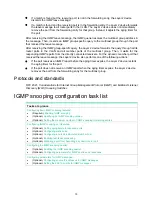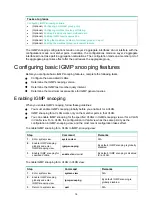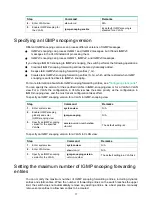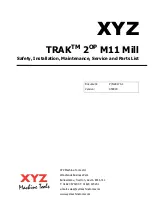
5
multicast sources. In this model, receivers do not know the positions of the multicast sources in
advance.
SFM model
The SFM model is derived from the ASM model. To a multicast source, the two models appear to
have the same multicast membership architecture.
The SFM model functionally extends the ASM model. The upper-layer software checks the source
address of received multicast packets and permits or denies multicast traffic from specific sources.
Therefore, receivers can receive the multicast data from only part of the multicast sources. To a
receiver, multicast sources are not all valid, but are filtered.
SSM model
The SSM model provides a transmission service that enables multicast receivers to specify the
multicast sources in which they are interested.
In the SSM model, receivers have already determined the locations of the multicast sources. This is
the main difference between the SSM model and the ASM model. In addition, the SSM model uses a
different multicast address range than the ASM/SFM model. Dedicated multicast forwarding paths
are established between receivers and the specified multicast sources.
IP multicast architecture
IP multicast addresses the following issues:
•
Where should the multicast source transmit information to? (Multicast addressing.)
•
What receivers exist on the network? (Host registration.)
•
Where is the multicast source that will provide data to the receivers? (Multicast source
discovery.)
•
How is the information transmitted to the receivers? (Multicast routing.)
IP multicast is an end-to-end service. The multicast architecture involves the following parts:
•
Addressing
mechanism
—A multicast source sends information to a group of receivers
through a multicast address.
•
Host
registration
—Multicast receivers can join and leave multicast groups dynamically. This
mechanism is the basis for management of group memberships.
•
Multicast
routing
—A multicast distribution tree (a forwarding path tree for multicast data on the
network) is constructed for delivering multicast data from a multicast source to receivers.
•
Multicast
applications
—A software system that supports multicast applications, such as video
conferencing, must be installed on multicast sources and multicast receivers. The TCP/IP stack
must support reception and transmission of multicast data.
Multicast addresses
IP multicast addresses
•
IPv4 multicast addresses:
IANA assigns the Class D address block (224.0.0.0 to 239.255.255.255) to IPv4 multicast.
Table 2 Class D IP address blocks and description
Address block
Description
224.0.0.0 to 224.0.0.255
Reserved permanent group addresses. The IP address
224.0.0.0 is reserved. Other IP addresses can be used by
routing protocols and for topology searching, protocol
maintenance, and so on.
lists common permanent



